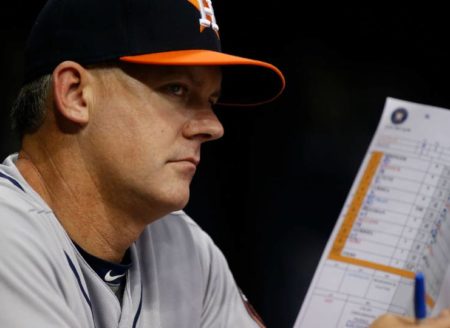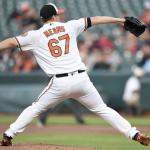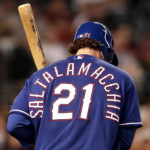Young Manager Movement Made for Millennials
 Exploring how teams are currently being built is an exercise in math, psychology and talent evaluation. What is driving the sport of baseball: players or money? How do you maximize your return on investment? Is the key to the future and direction of baseball start with who is the manager is on the field?
Exploring how teams are currently being built is an exercise in math, psychology and talent evaluation. What is driving the sport of baseball: players or money? How do you maximize your return on investment? Is the key to the future and direction of baseball start with who is the manager is on the field?
One thing that made baseball unique was it’s ability to isolate itself from trends like other sports. In football you constantly hear the phrase, “it’s a copycat league.” One team runs the Wildcat offense, next thing you know, every team has a package. It’s so bad it trickles down to fans. If I had a dollar for every time some mouth-breathing, causal fan said, “RPO”, I’d have enough money to pay every Jerry Jones fine.
We’re seeing it now in basketball with tanking and super teams. Either be the best or be the absolute worst. Regardless of your feelings, that’s a valid strategy. It’s one that has benefitted the players and a league with ratings up over 17% year-over-year.
It’s amazing how baseball kept a template on rosters and organizational focus for so long. For the most part, teams had two basic decisions to consider: Spend money and get good right now, or save money and build through the draft. You’d see teams trade away a superstar for a package of players, hoping to get a three- to five-year window of solid play, growth and some playoff money.
Roster-wise, you saw the same template for lineups for generations. Fast-contact guys at the top, power hitters in the middle, whatever is left over to round it out.
With the advance of analytics, we’re seeing all kinds of lineups. Baseball is evolving; the way teams build the organization is evolving. Factors like the luxury tax and draft-pick value also have a major impact. Teams are savvy, shrewd and business-focused. And like basketball, they want to get younger and cheaper. More player control means you pay less, evaluate longer and extend your winning window before letting another team overpay — or you build enough equity to sign them for a reasonable price.
Believe it or not, the Giancarlo Stanton contract was a steal. Without even projecting baseball’s growth in revenue, one million dollars today is going to be worth 841,265 dollars in 2025. That’s a loss of $158,735 off every million for Stanton due with a typical inflation rate of 2.5%. Clayton Kershaw, will make a minimum of $32 million per season from 2015 to 2020. Stanton will make $32 million per season from 2023 to 2025. Amazing.
Bottom line: Clubs are getting smarter with money. Even the Yankees and Dodgers are trimming back. As teams try to copy what Theo Epstein & Co. have done on the North Side of Chicago, that value — signing the right free agents, keeping contracts from getting bloated, drafting properly and signing the right International players — all leads to a younger group on the field.
If teams are getting younger, how do they squeeze the most out of this new generation? They hire people that are relatable!
Back to football, look at the Los Angeles Rams’ most prized possession, Jared Goff. Who did the Rams hire? A young, intelligent coordinator in Sean McVay. They were rewarded handsomely with leaps and bounds of progress, potentially averting disaster for Goff as a prospect, the Rams and the NFL.
Baseball sees your one coach and raises you with one of its own. When the Astros sensed they had young talent to mold, they turned to a younger voice in A.J. Hinch. Granted, Hinch was a retread. However, at just 41 years-old when hired, he positioned himself as a fit to connect with a younger generation.
Hinch isn’t the only one. There are six new managers this year with no managerial experience in the majors. Their average age is just 46.7 years-old. That’s not taking into account guys like Andy Green of the San Diego Padres and Kevin Cash of the Tampa Bay Rays, who aren’t turning 41 until the offseason and have multiple years under their belts.
Now, the question becomes is this a fad, a changing of the guard or is it here to stay? The easy way out is to all three. Each team has a motive behind why they’re moving in this direction. My educated guess is this quickly goes from a fad to a thought process going forward. People thought “Moneyball” was a fad until someone playing the same analytical game got beyond the ALDS. With Houston’s incredible win as a young team with a “player’s coach,” the focus on a bridge — from old guard to new guard that caters to young players — isn’t going away.
Expect to see less Joe Girardis and more Joe Maddons. You have to cease these three-year windows where guys like Kris Bryant are winning MVPs while making $10 million a year. Those opportunities evaporate quickly. The hometown discount is disappearing, and players are becoming shrewd businessmen as quickly as the GMs. If you want a guy to stay, be happy and win for your fanbase, you need to have someone he can stand being around for nine months of the year.
As teams get smarter and more data-driven, they’re going to look for edges. The last non-tangible edge is going to be the psychological makeup of the player. Watch and see how sports psychology slowly melds into a more pronounced role in team-building going forward. Young managers, regardless of experience, are here to stay. These managers are made for millennials.


























